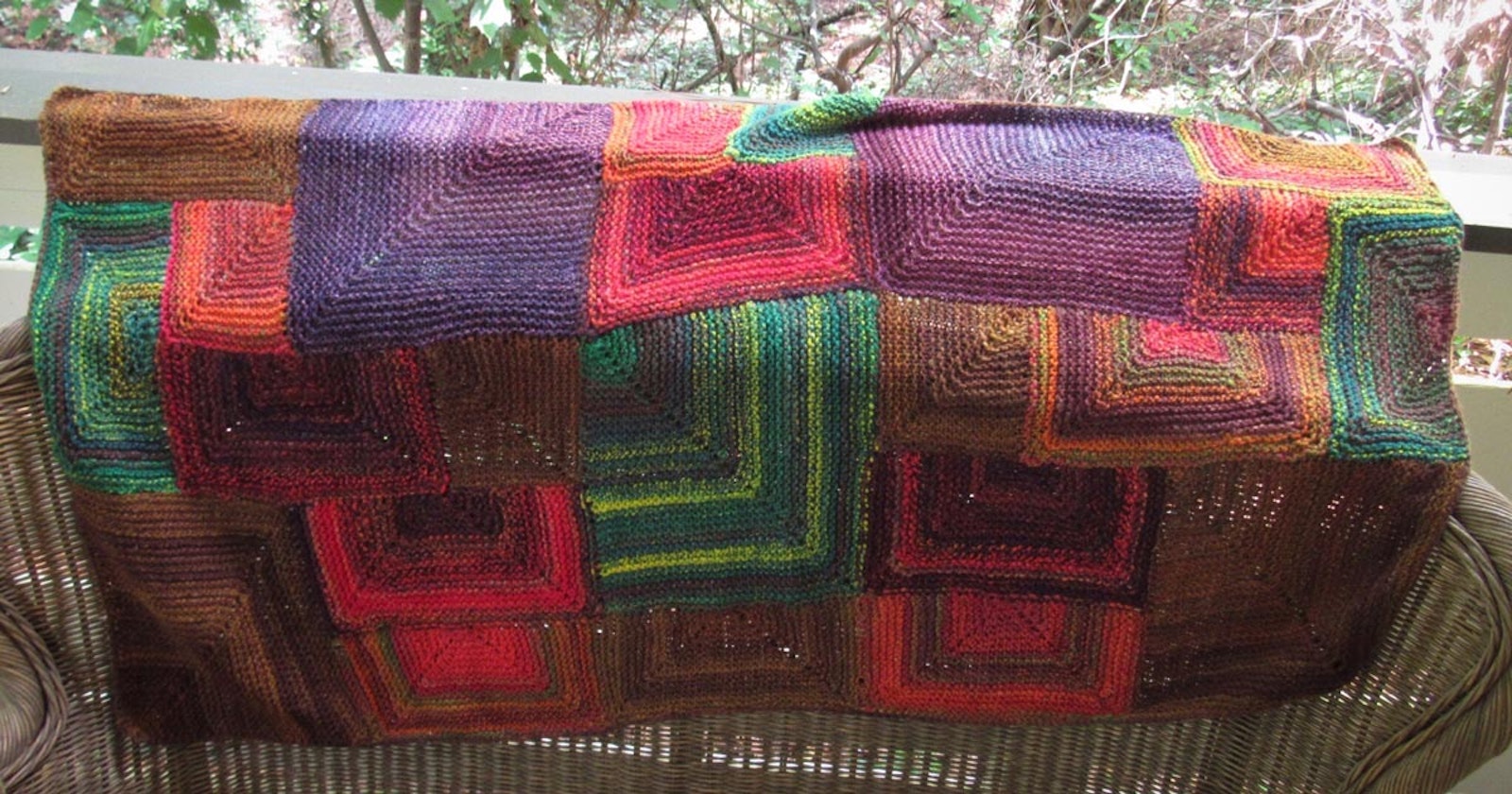Using handspun yarn in a pattern written for commercial yarn can sometimes go awry in a costly, time-consuming, if well-meaning way. Such was the case for my mom and me recently. After spending months (and a fortune) spinning for a hand-knit blanket as a wedding gift for a family friend, we found ourselves short on yarn and in need of a backup plan.
I’ll share what we learned in hopes of sparing you your own big-effort, small-reward project.
1. Always knit a nice, big gauge swatch, even when you’re “only” making a hand-knit blanket.
Handspun adds a whole new dimension to a pattern’s yardage requirements, and the exchange of yarn is not always yard for yard. The yarn’s density or loftiness, its elasticity, its means of preparation, and whether it’s been spun worsted or woolen all affect the way that yarn knits up. Especially in a large project, understand the yarn’s gauge and where you’re headed.
After all, you wouldn’t want to run out of yarn. (Cue ominous music . . .)
2. Your gauge swatch doesn’t apply when you bring on a different knitter . . .
. . . even if she is your mother.
3. Check Ravelry to see if others have used handspun with your pattern. I noticed that the yardages used for the blanket varied from about 1,000 yards to more than 5,000 yards per blanket. This pattern had not been recorded on Ravelry in several years, perhaps because it is not available digitally. The pattern booklet costs $8 plus $2 for postage, so by the time I received it, I was committed to this pattern. The fact that the only handspun version of the blanket I could find used three times the amount of yarn I’d spun up blew right past me. (Besides, I’d been planning on knitting the smallest, throw-sized blanket, so surely this would all work out in the end, right?) According to the pattern booklet itself, I had ample yarn.
4. Ask yourself, “Does it need to be handspun?” Before you take on the time, effort, and expense of handspinning the yarn for a project, ask yourself whether it’s even the ideal material for your recipient. Just as most non-knitters have no concept of the amount of time it takes to knit an item the size of a blanket (even a small lap blanket), they probably won’t understand the differences between handspun and commercial yarn, let alone appreciate the differences between the two. (In our case, the bride mainly wanted something in a color that matched her décor. All yarns were otherwise equal in her book.)
I cannot stress this enough.
Why did I insist on spinning for this hand-knit blanket? In truth, I did it so that I could knit with a yarn I enjoy. I couldn’t face knitting any size of blanket with a yarn I did not love. (I almost never give the gift of handknits, and only then to my immediate family members and very best friend.)
Can you tell which among these squares were knitted from scraps? Answer: each one you see in this photo! Photos by Debbie Held
My mom saved the day by stepping in to knit this blanket for me while I tended to other projects—and she is always looking for an excuse to knit with handspun anyway. It wasn’t long before she realized that we were in trouble, yardage-wise. After putting our heads together, my mother came up with these solutions: knitting smaller sized rectangles than called for in the pattern, combining the remaining handspun into like colors, and using those scraps to knit the squares still remaining.
I was able to block the blanket to a respectable lap-blanket size of 36” x 72”.
We think it is beautiful, as does everyone in our family who has seen it, but we realize that it may be a total miss for the bride. My mother and I are moving past that by making a new one just for one of us.
And with that, I offer this one last tip: Know who you are as a knitter and whether you enjoy gifting your knits. There is no shame in this knowledge, either way.
Debbie



